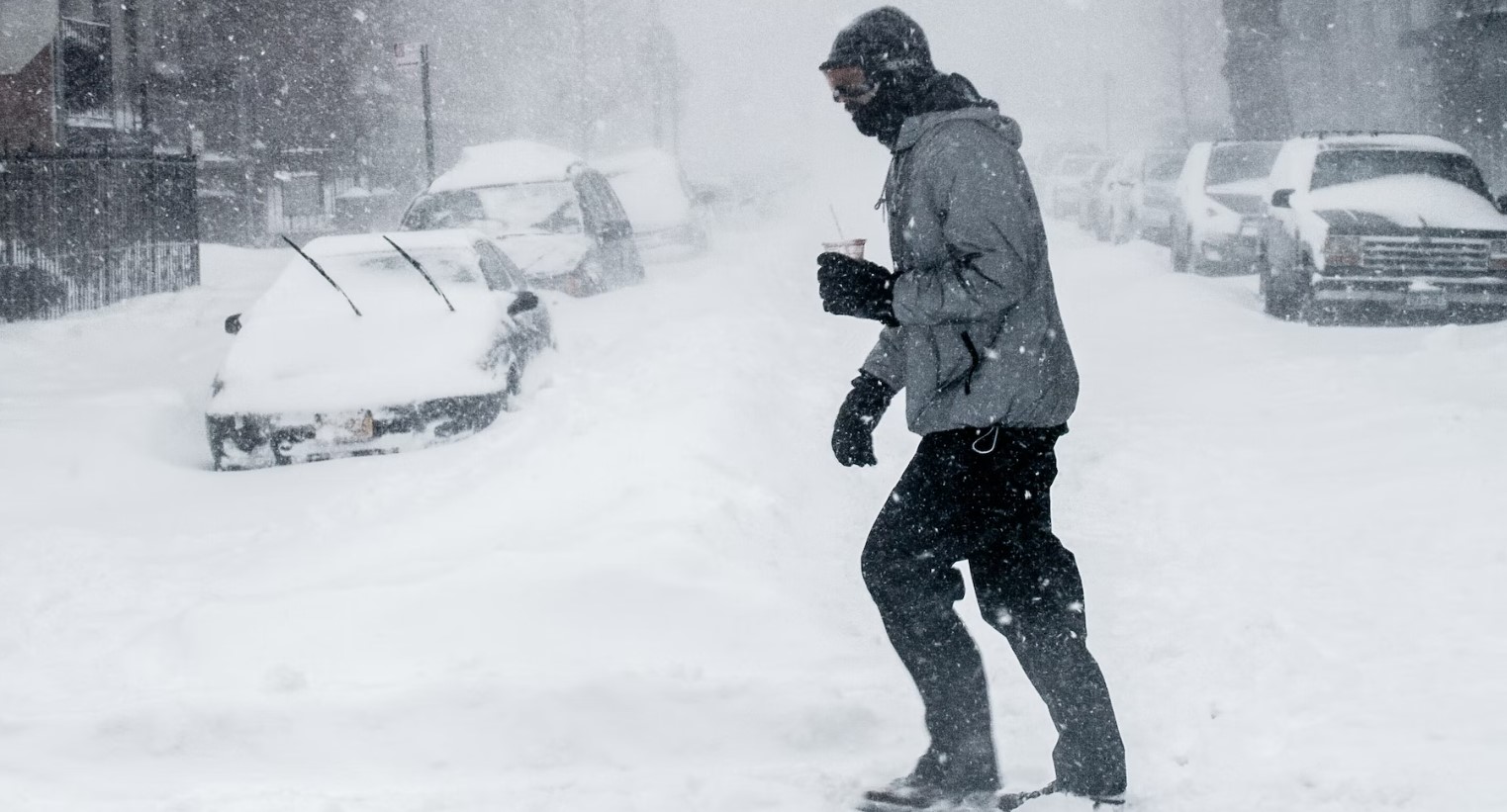‘Consensus’ on climate science takes a hit in 2017
Climate change research for 2017 revealed that the alleged "consensus'" on the so-called dangers of anthropogenic global warming has not yet been established as far as all climate scientists are concerned.
Published: January 11, 2018, 10:38 am
Author Kenneth Richard looked into research conducted in 2017, and found that at least 485 scientific papers were published that in some way questioned the supposed consensus.
These papers questioned the human contribution to CO2 emissions or the efficacy of climate models to predict the future and showed that significant limitations and uncertainties remain.
According to Richard’s analysis, the 485 new papers highlight “significant limitations and uncertainties inherent in our understanding of climate and climate changes,” suggesting that climate science is not as clear as media reports and climate activists would have people believe.
More specifically, the papers support the four main skeptical positions which question climate alarm.
They suggest that natural mechanisms play well more than a negligible role as claimed by the Intergovernmental Panel on Climate Change (IPCC) in the net changes in the climate system, which includes temperature variations, precipitation patterns, weather events, etc.
The IPCC is the leading international body for the assessment of climate change. It was established by the United Nations Environment Programme (UNEP) and the World Meteorological Organization (WMO) in 1988 to provide the world with a clear scientific view.
The IPCC position is that natural mechanisms would have caused a slight cooling in the recent past. Instead it warmed significantly. The best current explanation is the forcing from GHGs such as CO2, but this doesn’t mean that the Sun has no influence.
The IPCC claimed that the Himalayan glaciers would “disappear” by 2035. The reality is that a recent study indicated they were predominantly stable with very little melting.
The influence of increased CO2 concentrations on climatic changes, they maintain, are less pronounced than currently imagined.
Warming, sea levels, glacier movement and sea ice retreat or hurricane and drought intensities are neither unprecedented or remarkable, nor do they fall outside the range of natural variability.
Computer climate models are not reliable or consistently accurate, and projections of future climate states are little more than speculation as the uncertainty and error ranges are enormous in a non-linear climate system.
There may be an actual consensus on the existence of the greenhouse gas effect, something that can be experimentally demonstrated, but elevated CO2 and a warmer climate provide unheralded benefits to the biosphere, including for enhanced crop yields.
Current emissions-mitigation policies, especially related to the advocacy for renewables, are often ineffective and even harmful to the environment, some argue.
Large regions of the Earth, including much of the Southern Hemisphere, has not warmed in decades, and this should not be happening with well-mixed greenhouse gases.
The Southern Ocean been cooling since 1979, and not one of the “consensus” climate scientists has named the mechanism for the cooling and increased sea ice extent, Richard has noted.
“Most of the Southern Hemisphere and even almost half of the Northern Hemisphere have been cooling for the last few decades. The warming has not been global in scale,” he pointed out.
The “consensus” positions are that close to or over 100 percent of the warming since 1950 has been caused by increases in anthropogenic CO2 emissions, leaving natural attribution at something close to zero.
All rights reserved. You have permission to quote freely from the articles provided that the source (www.freewestmedia.com) is given. Photos may not be used without our consent.
Consider donating to support our work
Help us to produce more articles like this. FreeWestMedia is depending on donations from our readers to keep going. With your help, we expose the mainstream fake news agenda.
Keep your language polite. Readers from many different countries visit and contribute to Free West Media and we must therefore obey the rules in, for example, Germany. Illegal content will be deleted.
If you have been approved to post comments without preview from FWM, you are responsible for violations of any law. This means that FWM may be forced to cooperate with authorities in a possible crime investigation.
If your comments are subject to preview by FWM, please be patient. We continually review comments but depending on the time of day it can take up to several hours before your comment is reviewed.
We reserve the right to delete comments that are offensive, contain slander or foul language, or are irrelevant to the discussion.

Ohio disaster: When hedge funds manage rail traffic
East PalestineAfter the derailment of a freight train loaded with highly toxic chemicals in the US state of Ohio, a devastating environmental catastrophe may now be imminent. The wagons burned for days, and a "controlled" explosion by the authorities released dangerous gases into the environment.

US President Biden orders ‘spy’ balloon to be shot down
WashingtonThe US President gave the order to shoot down China's "spy balloon". The balloon had caused US Secretary of State Blinken to cancel a trip to Beijing. In the meantime, a second balloon was sighted.

US is heading for a financial ‘catastrophe’ US Treasury Secretary warns
WashingtonOn January 19, 2023, the United States hit its debt ceiling of $31.4 trillion. The country faces a recession if it defaults on its debt, the US Treasury Secretary warned in an interview. Her warning underscored the danger of printing money.

Gun violence: More risk in Chicago and Philadelphia than Iraq, Afghanistan
Providence, Rhode IslandA striking statistic: young Americans are several times more likely to be injured by a gun in cities like Chicago and Philadelphia than they are while serving as a soldier in a foreign country.

Elon Musk, the first person in history to destroy $200 billion in a year
Never before in human history has a person lost as much money in one year as Elon Musk did in 2022. The Tesla and Twitter boss lost $200 billion last year. However, with his remaining $137 billion, he is still the second richest person in the world.

Extreme cold and winter storms sweep across US
More than a million households without electricity, thousands of canceled flights, temperatures in the double-digit minus range and already 41 fatalities: The US is being overwhelmed by an enormous cold wave.

Soros sponsors violent leftists and anti-police lobby as US crime surges
WashingtonThe mega-speculator and "philanthropist" George Soros remains true to himself – he has been sponsoring anti-police left-wing groups with billions of dollars.

FTX Founder Sam Bankman-Fried arrested after crypto billions go missing
NassauHe is no longer sitting in his fancy penthouse, but in a cell in the Bahamas: Sam Bankman-Fried (30), founder of the crypto company FTX, is said to be responsible for the theft of 37 billion euros. An interesting fact is that media in the EU have so far kept this crime thriller almost completely secret.

How Twitter helped Biden win the US presidency
WashingtonThe short message service Twitter massively influenced the US presidential election campaign two years ago in favor of the then candidate Joe Biden. The then incumbent Donald Trump ultimately lost the election. Internal e-mails that the new owner, Elon Musk, has now published on the short message service show how censorship worked on Twitter. The 51-year-old called it the “Twitter files”.

Alberta PM suspends cooperation with WEF
EdmontonThe newly elected Premier Danielle Smith of the province of Alberta in Canada has recently made several powerful statements against the globalist foundation World Economic Forum and its leader Klaus Schwab. She has also decided to cancel a strange consulting agreement that WEF had with the state.

